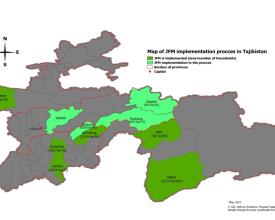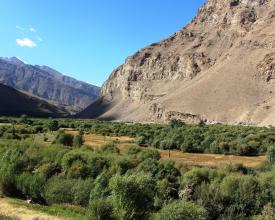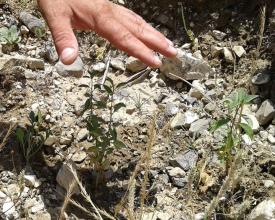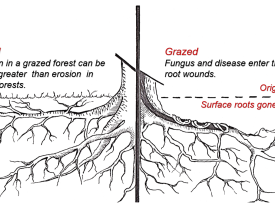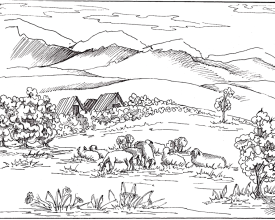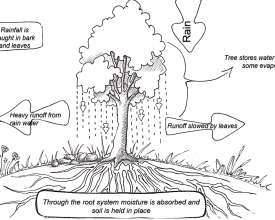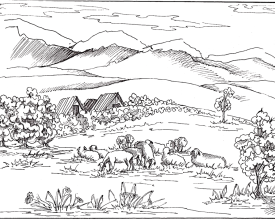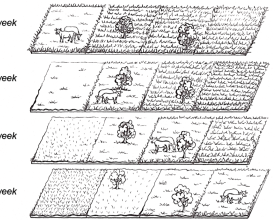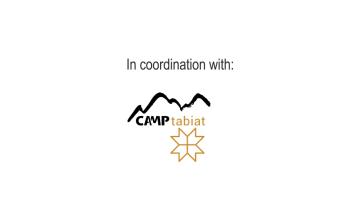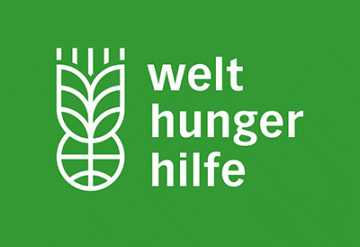
Integrative Forest Management
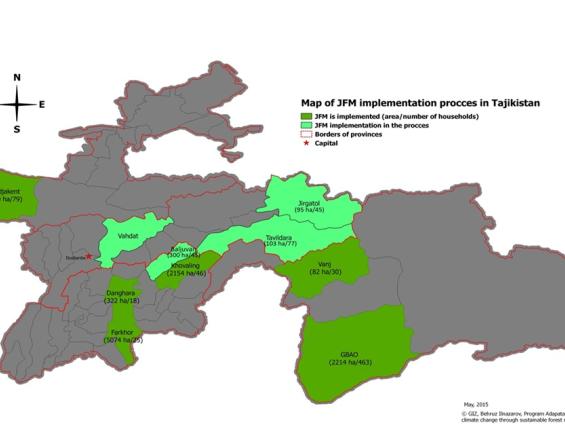
In Tajikistan, forests have suffered from deforestation due to an energy shortage after the collapse of the Soviet Union. Today a weak forest governance system and imprecise land use rights lead to mismanagement and consequently a slow reforestation process. A weak financial infrastructure and a steady inflow of remittances have entailed an increase in livestock which has resulted in land use conflicts, enforced by few and partially contradicting regulations. A changing climate, increasing the frequency and intensity of disasters intensifies the pressure on communities and their surrounding ecosystems. Consequently, climate change adaptation, sustainable pasture management, and clear land use rights must form an integral part of forest management. This solution forms a guideline for integrative forest management rooted in the Joint Forest Management (JFM) approach, accounting for adaptation to climate change, sustainable pasture management, biodiversity preservation, and gender equity.
Contexte
Défis à relever
Tajikistan is among the Central Asian countries most severely affected by climate change. This is evident from the growing incidence of natural disasters, such as landslides, floods and droughts, and a general decline in the availability and quality of water. Following the collapse of the Soviet Union, large areas were deforested to meet the need for fuelwood, especially during the severe civil war from 1992 to 1997. This now makes the country more vulnerable to climate change and exacerbates its negative impacts. Land use conflicts further contribute to the overuse and degradation of forest areas. Forest land is increasingly in competition with insufficient pasture land, which has resulted in many forest areas being grazed. A weak financial system and a steady inflow of remittances have stimulated the investment in cattle which has resulted in much pasture land and forests being overgrazed. Forest landscape restoration, consequently, requires an integrative and multi-level solution.
Emplacement
Traiter
Résumé du processus
Joint Forest Management builds the basis for sustainable forest management with the capacity development modules and the work on national level as two of its most important components, while the landscape perspective is an extension to address current environmental, economic, and social challenges. The building blocks together build a successful integrative forest management solution that can be flexibly adapted and redesigned modular to a different context.
Blocs de construction
Joint Forest Management (JFM) approach
Joint Forest Management (JFM) is a participatory forest management approach that allows the local population – either individuals or groups – to become involved in forest management and support the rehabilitation of degraded natural forests over the long term. These individuals sign a contract for the land use rights with the State Forest Enterprises for a period of 20 years, with the possibility for prolongation. This encourages the tenants to sustainably manage and rehabilitate their forest plot of usually 1-2 ha in size. In addition to the contract, management and annual plans serve as tools for forest management planning and for the monitoring of activities and results. They are developed jointly by the State Forest Enterprises and the respective tenant for each individual plot. Typical tasks specified in the annual plan are measures to protect the plot from livestock grazing, planting of trees, harvesting and pruning. Further, the annual plan specifies the harvest shares of the State Forest Enterprises and the forest tenant according to a fair sharing principle defined in the contract. The management plan, developed, for a 5 year period, specifies long-term goals, such as the installation of an irrigation channel or the diversification of the forest plot.
Facteurs favorables
While land use rights in Tajikistan are typically given for a short period (usually for one single season), the 20-year contract with the State Forest Enterprises enables the tenant to develop a long-term forest management plan. The joint forest management approach has been first introduced in Tajikistan in 2006 and ever since gained in reputation. In 2011, the approach was formalized and anchored in the national forest code.
Leçon apprise
The experience has shown that for the introduction of JFM the support by external facilitators (e.g. field staff or a local NGO) is indispensable. Both contracting parties, forest tenant and State Forest Enterprise, need to have a clear understanding of their rights, rules, and obligations. Therefore, it is highly recommended to have experienced and skilled facilitators present in the field, who have a sound understanding of the approach and of the local context. Further, the facilitators need to guide the tenants as well as the staff of the State Forest Enterprises through the process of selecting a forest area, introducing the approach to the communities, selecting forest tenants, delineating the individual plots, concluding the contract, and developing the annual- and management plans. Further, the establishment of forest tenant groups has proven to be successful, especially since, in Tajikistan, community groups are relatively common. Jointly, the forest tenants perform activities such as harvesting, pruning or fencing.
Landscape perspective
By applying a landscape perspective to forest management, the ecosystem as a whole is considered. For this solution, a special focus has been given to biodiversity, climate change adaptation, and pasture management.
A diverse forest plot has multiple benefits for the forest tenant. Firstly, the tenant has a diverse harvest which contributes to food and nutation security. Secondly, species diversity reduces the risk of pests and increases the soil fertility. Thirdly, diverse forests provide a habitat for pollinators, which are crucial for fruit and nut trees.
Tajikistan is prone to disasters, further reinforced by overharvested natural resources and climate change having fierce impacts. Landslides and droughts are common phenomena but the frequency and intensity have increased significantly. Forest cover on slopes and along river banks are an important adaptation and disaster risk reduction strategy.
Further, livestock is frequently grazing on forest areas, as pastures are scarce and the limited land available overused and degraded. Forest grazing reduces ground cover, impedes the root system, and hinders natural forest regeneration. Therefore, grazing must be addressed together with the forest tenants and solutions identified that go beyond the prohibition of grazing in forests.
Facteurs favorables
By applying a landscape perspective, a multitude of problems, difficulties, and risks to the community can be addressed. Consequently, the approach has gained in acceptance by the local communities as it takes environmental, economic and social challenges into account.
Leçon apprise
The experience has shown that political land delineations often do not correspond with ecosystem boundaries. Areas, assigned for re- and afforestation, do usually not cover a whole ecosystem but are part of a bigger ecosystem with which the forest area interacts and shares resources. Consequently, forest management needs to consider implications by and interactions with the wider ecosystem the forest plot is part of. As various land use types and land use rights interact in one ecosystem for which different ministerial bodies are responsible, the establishment of an inter-sectoral dialogue to foster coordination and cooperation of all involved actors at landscape level has proven to be successful. Within the JFM implementation in Tajikistan, a bi-annual exchange has been established, where practitioners, relevant ministries and local as well as international organizations exchange. This exchange platform is not only appreciated by partners but also helped to include the landscape perspective. Therefore, an exchange platform is highly recommendable.
Competence development for forest tenants and staff of State Forest Enterprises
Competence development of forest tenants and of State Forest Enterprises (SFE) is likewise an important element of integrative forest management.
On the one hand, training on forest management techniques is required either directly for the forest tenants, who are often new to forest management, or for the local forester and other employees of the SFE. The training includes silvio-cultural techniques, such as grafting and pruning, and management of fruit tree species. On the other hand, training on the rights and responsibilities of the two contract parties, the forest tenant, and the SFE is needed.
Additionally, a modular training for forest tenants and foresters to encourage a landscape perspective when planning forest management activities has been developed. Within these training modules, the tenants identify threats and vulnerabilities of their communities and learn how re-and afforestation can be a suitable disaster risk reduction strategy. Further, land use conflicts on forest land are addressed and the training provides a platform to exchange and identify solutions, e.g. regulating if, when and how much livestock can graze on forest plots. Moreover, forest tenants learn about the benefits of diverse forest areas and the benefits of planting and grafting local tree species.
Facteurs favorables
Increased capacities enable forest tenants to plan and manage their forest plots in a sustainable manner. The same training is given to male and female forest tenants separately, where the cultural setting holds women back in actively participating in the discussions and, consequently, separate sessions become necessary. Giving separate training for women by women has empowered female forest tenants in Tajikistan.
Leçon apprise
The experience has shown that often it is not only limited knowledge of forest management that hinders the sustainable use of the resource but also a lack of communication and agreements between different land users. Especially, forest and pasture management compete for the limited land resources. In the past, the approach prohibited grazing on Joint Forest Management areas. However, monitoring visits have shown that this rule has frequently been violated. Therefore, rather than prohibiting grazing on forest plots, the aim is to address the problem openly together with the community. Understanding why and when they graze their livestock on forest plots and making them understand how and when it harms the forest the most. This has enabled forest tenants to find solutions, such as the implementation of a pasture rotation system, to reduce the negative impacts of free grazing and to address the problem together with their community.
Mainstreaming integrative forest management
For the successful application of the approach, sustainable and integrative forest management needs not only to be piloted and practiced on the ground but also integrated into national strategies, development plans, and long-term forest management planning and monitoring. Consequently, it is equally important to work with forest tenants on the local level as to mainstream the approach on the national level.
The Join Forest Management approach has been anchored in the Forest Code of Tajikistan in 2011. This builds the legal basis of the implementation and accelerates the further dissemination to other parts of the country. Since 2016, a more integrative forest management is practiced for which an inter-sectoral dialogue has been established. This inter-sectoral dialogue facilitates to address environmental, economic and social challenges beyond the mandate of the forest agency. Forest monitoring and management planning are being strengthened through support to the forest inspection unit. Only if a forest management planning system and a forest monitoring structure are in place, an approach such as the integrative forest approach can be out scaled throughout the country and mismanagement, corruption, and wide-scale violations of regulations (e.g. grazing on forest plots) prevented.
Facteurs favorables
The JFM approach follows a multilevel approach, targeting national, regional and local level which has proven to be necessary and consequently successful.
Leçon apprise
A theoretically sound solution can only be as good in practice as its underlying management planning and monitoring system as well as its political support.
Impacts
Integrative forest management addresses not only environmental but also social and economic challenges by applying a landscape perspective.
Reforestation of forest land is especially important where climate change impacts are severe. Forests perform an essential function in regulating the water balance and decreased vulnerability to natural hazards while forest biodiversity improves soil structure and fertility, reduces the risk of pests, and increases the number of pollinators. However, a growing number of cattle has not only resulted in degraded pastures but also in forest grazing. Forest grazing impedes forest regeneration and harms the root system, which further increases the risk of soil erosion.
The integrative forest management approach is based on the Joint Forest Management (JFM) approach, where individuals take an active role in sustainable forest management and in return receive a fair share of the harvest, based on clear and transparent land use rights for 20 years. These land use rights allow for long-term thinking, and consequently, enable forest tenants to make sustainable management decisions.
From an economic perspective, forests play a key role. Firewood, fodder, medicinal plants, fruit and nuts represent an important source of income. Consequently, through JFM the forest tenants gain economic benefit from their forest plot.
Bénéficiaires
Main beneficiaries of the approach are forest tenants, who receive land use rights for a forest plot over a period of 20 years. Secondary beneficiaries are the local representatives of the state forest agency (State Forest Enterprises).
Objectifs de développement durable
Histoire
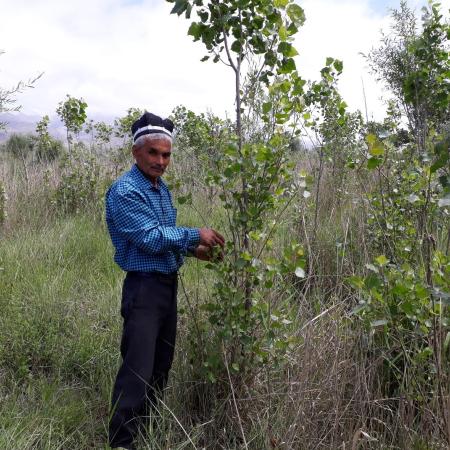
“Joint Forest Management has motivated me and many of my neighbours to rehabilitate our forests”, says Mr. Khandamir Khujamerov. He is one of 20 forest tenants in the Sarazm community, who have signed JFM contracts with the State Forest Enterprise in Penjikent. The tenants have jointly rehabilitated about 20 hectares of riparian forests along the Zeravshan riverbank. In spring, when the temperatures rise, the Zeravshan river carries the meltwater from the mountains to the lowlands and regularity causes flooding. After a strong winter, the river reaches the villages and causes damage to settlements and washes of the hummus on arable land. Climate change has further increased the water levels due to melting glaciers. Reforestation along the river bank has helped to keep the river at bay.
Since Mr. Khujamerov has signed his JFM contract in 2013, he has planted over 500 trees on 4.3 hectares and has installed a fence to protect the seedlings from grazing cattle. In his forest management and annual plans, he decides together with the local forest expert how to rehabilitate his plots and which tree species to grow. In 2016, Mr. Khujamerov has diversified his forest plots with willow and poplar trees and planted sea buckthorn along the fence, which due to its thorns keeps cattle well away.
“Forests are one of the most important natural resources for us and they are of great importance in people's lives, especially in rural areas like our village”, explains Mr. Khujamerov. Indeed, forests provide rural communities not only with firewood but also non-timber forest products, such as medicinal herbs, fruits, and nuts.
Mr. Lumonov, director of the State Forest Enterprise, says: “thanks to very engaged forest tenants, as Mr. Khujamerov, the JFM approach has spread to other villages in the Zerafshan valley, and more and more communities are approaching us with interest to conclude a JFM contract”. He further explains that the JFM approach not only positively contributes to the rehabilitation of forest areas, but also to a sustainable development of the communities. Forest tenants have joined forces to perform forest activities, such as pruning or fencing, together. This has significantly strengthened the sense of community along the Zerafshan river.
“We – the local people are obliged to save the forest for our children and grandchildren”, concludes Mr. Khujamerov, “for every tree that has fallen in this country, we need to plant at least two new ones.”

